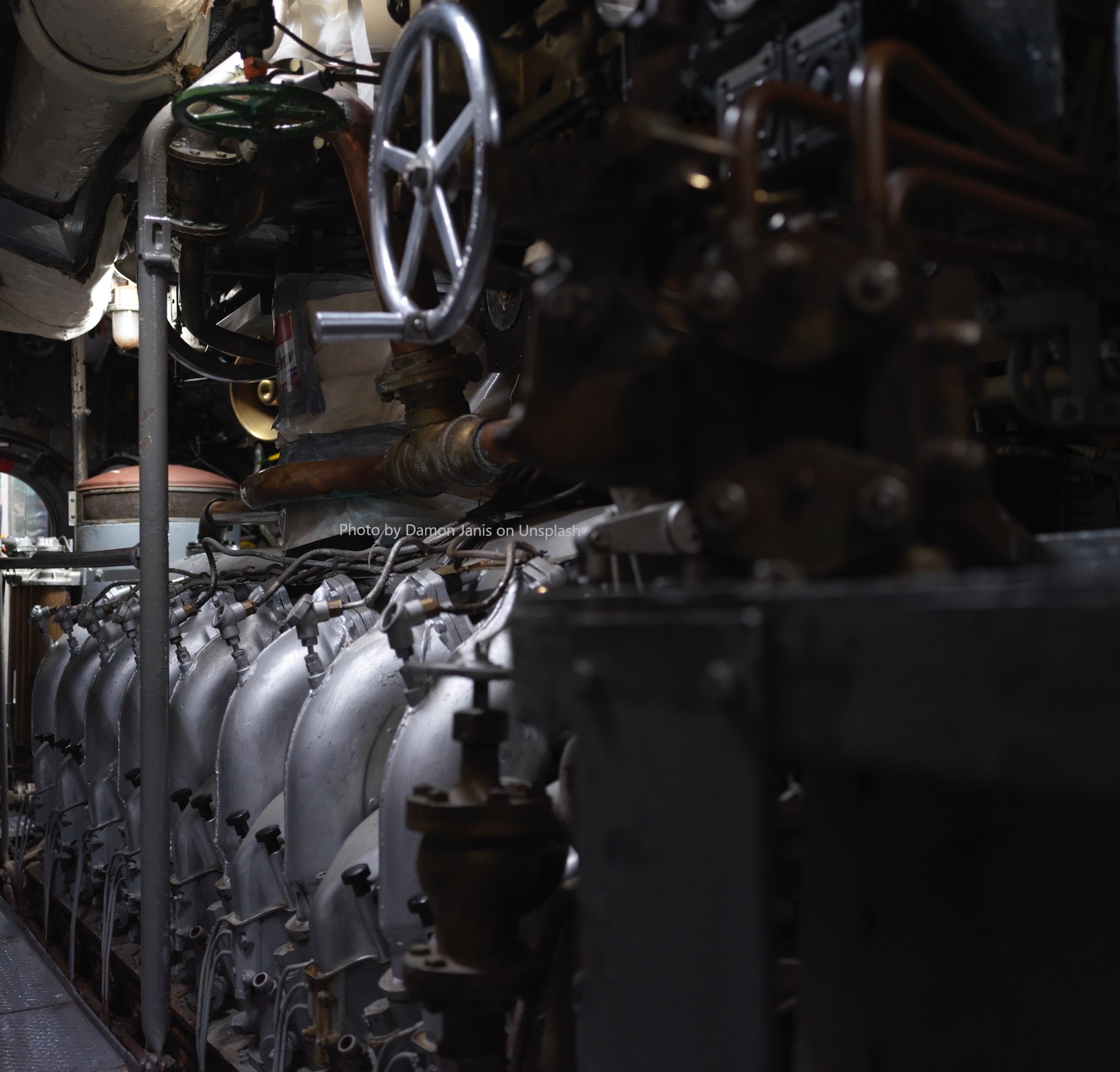
A Ship's Beating Heart - The Marine Diesel Engine
Overview
- High Power Output - Modern engines can produce tens of thousands of horsepower, enabling ships to carry massive cargo loads across oceans.
- Fuel Efficiency - Advanced combustion technologies and waste heat recovery systems maximize fuel efficiency, reducing operating costs and environmental impact. For detailed information about ship fuel systems, see our article on ship fuel systems.
- Environmental Compliance - Modern engines meet strict emissions standards through technologies like selective catalytic reduction (SCR) and exhaust gas recirculation (EGR).
- Reliability - Built to withstand harsh marine environments and operate continuously for extended periods. For information about ship maintenance practices, see our article on ship maintenance periods.
Types of Marine Diesel Engines
- Two-Stroke Engines - These large, slow-speed engines are the workhorses of the shipping industry, typically used for main propulsion in large vessels. They operate at lower RPMs (80-120) but produce massive power output. Their simple design and high efficiency make them ideal for long-haul shipping.
- Four-Stroke Engines - More compact and operating at higher speeds, these engines are commonly used for auxiliary power and smaller vessels. They offer better power-to-weight ratios and are more flexible in terms of installation options.
Leading Manufacturers
MAN Diesel & Turbo
- MAN B&W Two-Stroke Engines - The industry standard for large vessels, known for their fuel efficiency and low maintenance requirements. These engines feature advanced fuel injection systems and optimized combustion processes.
- Four-Stroke Engines - MAN's four-stroke engines are popular for auxiliary power and smaller vessels, offering excellent power-to-weight ratios and fuel efficiency.
- Digital Solutions - MAN's digital engine management systems provide real-time monitoring and optimization of engine performance.
Wärtsilä
- Dual-Fuel Technology - Wärtsilä's engines can run on both traditional marine fuels and cleaner alternatives like LNG, providing flexibility and reducing emissions.
- Smart Marine Solutions - Advanced digital systems for performance monitoring and predictive maintenance.
- Hybrid Solutions - Integration of battery systems with traditional engines for improved efficiency and reduced emissions.
Caterpillar Marine
- MaK Engines - Known for their reliability and long service intervals, MaK engines are popular in the commercial shipping sector.
- Cat Marine Engines - Offering excellent fuel efficiency and power density, these engines are widely used in various marine applications.
- Global Service Network - Caterpillar's extensive service network ensures support worldwide, with parts and expertise readily available.
Modern Engine Technologies
- Emissions Control - Technologies like SCR, EGR, and particulate filters help engines meet IMO Tier III and other environmental regulations.
- Digitalization - Advanced monitoring systems provide real-time data on engine performance, enabling predictive maintenance and optimization.
- Alternative Fuels - Development of engines capable of running on LNG, methanol, and other alternative fuels to reduce environmental impact.
- Hybrid Systems - Integration of battery storage with traditional engines for improved efficiency and reduced emissions.
Conclusion
Share This Article
Related Articles
Continue reading with these related articles

Autonomous Ships: The Future of Unmanned Maritime Operations
Explore the future of autonomous ships and unmanned maritime operations. Learn about self-driving vessels, maritime automation, and the technology behind autonomous shipping.

Autonomous Ships: The Future of Unmanned Maritime Transportation
Discover how autonomous ships are revolutionizing maritime transportation. Learn about unmanned vessels, AI navigation systems, and the future of crewless shipping operations.

Advanced Navigation Systems: GPS, AIS, and Next-Gen Maritime Navigation
Explore advanced maritime navigation systems including GPS, AIS, and next-generation navigation technology. Learn about ship navigation, maritime GPS, and modern navigation equipment.

Green Shipping Technology: LNG, Hydrogen, and Electric Propulsion Systems
Explore green shipping technology including LNG, hydrogen fuel cells, and electric propulsion systems. Learn how the maritime industry is going green with sustainable fuel alternatives.
© 2025 The Salty Mariner. All rights reserved.
